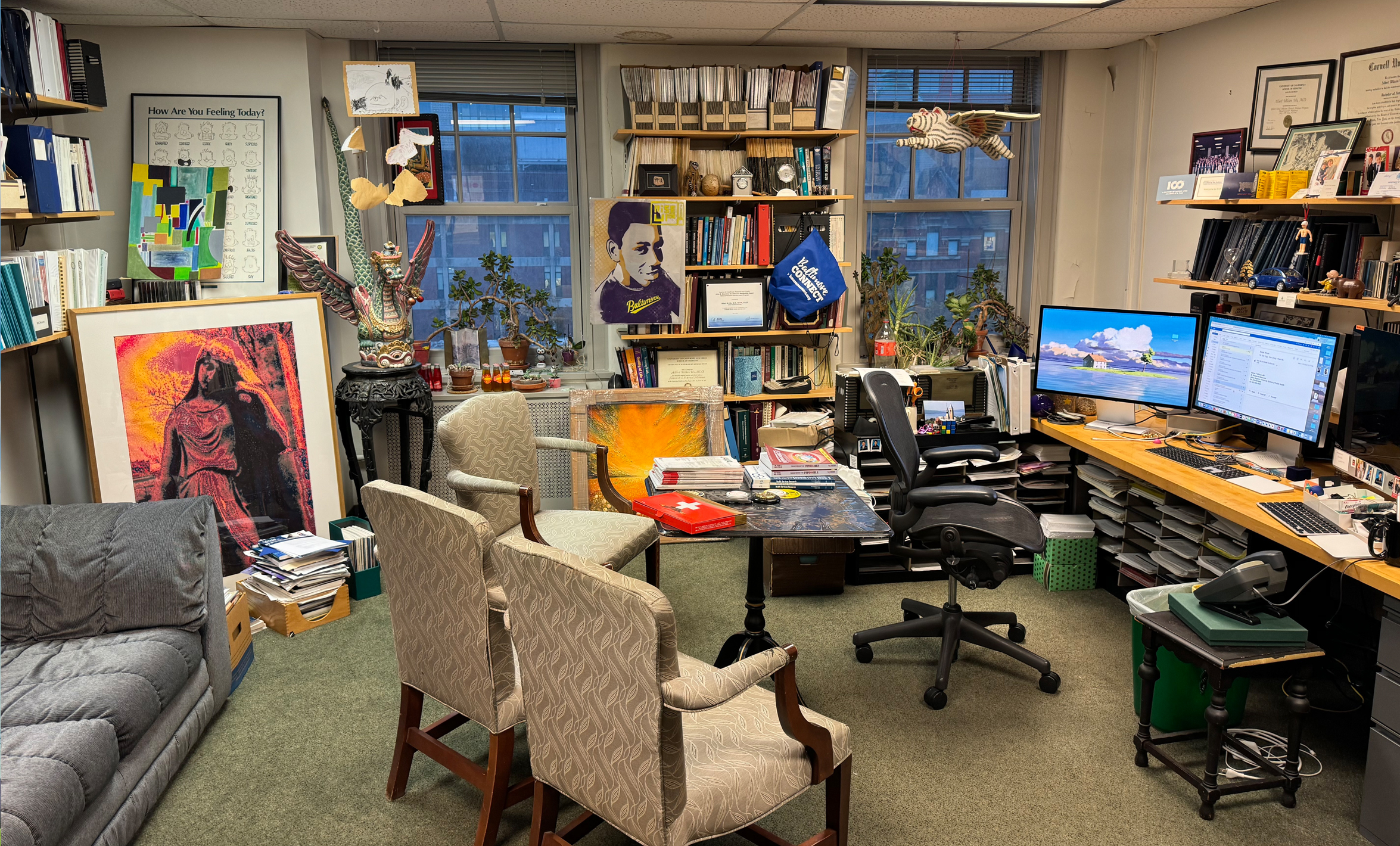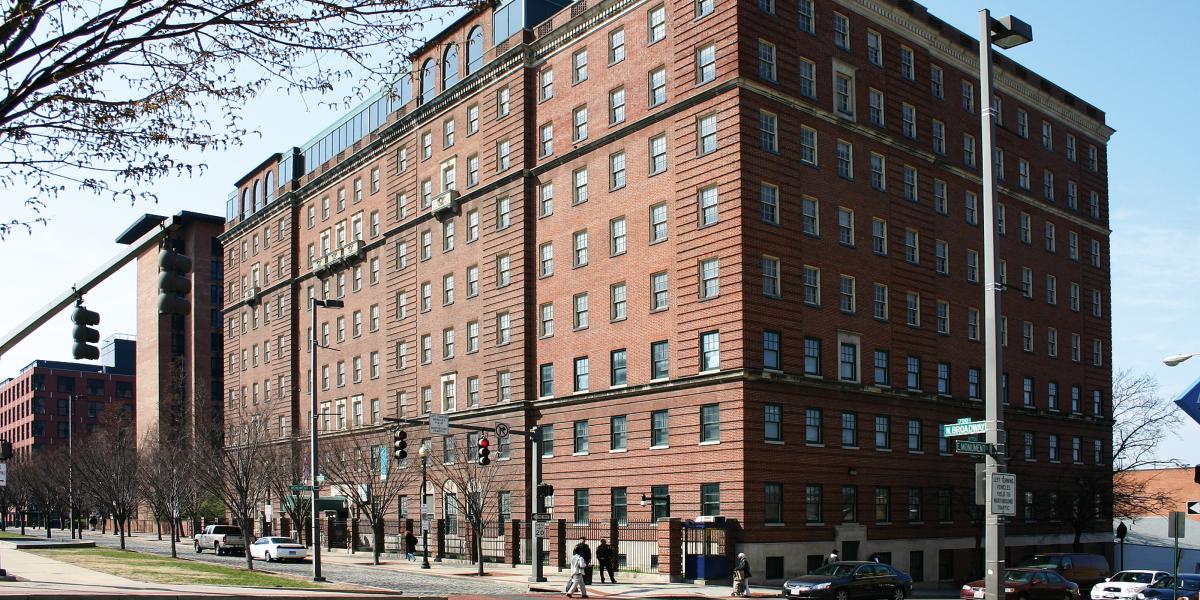Hampton House: A Cherished Space
Its halls and rooms are empty now, but Hampton House bore witness to pivotal public health discoveries for more than 50 years.
Hampton House has had many lives since its doors opened in 1926 as a dormitory for Johns Hopkins Hospital nursing students, complete with a parlor and formal dining room. Later on, it housed the East Baltimore branch of the Johns Hopkins Federal Credit Union, and then multiple centers and offices of the Bloomberg School.
After 98 years, the last occupants of Hampton House, including the departments of Health Policy and Management, Mental Health, and Health, Behavior and Society; the Center for Immunization Research; and the Center for Health Services and Outcomes Research made the move to other Bloomberg School digs in the spring to make way for the planned Life Sciences Building at Broadway and East Monument Street.
Nearby Reed Hall and the Cooley Center have been vacated and will also be taken down as part of the construction project, which is scheduled to take place from summer 2025 to 2028.
Hampton House denizens from decades past said their goodbyes at a celebration in May, including Dean Ellen MacKenzie, PhD ’79, ScD ’75, who had offices there for 36 years in a variety of roles, including as a member of the then Center for Health Services Research and Development, director of the Center for Injury Research and Policy, and chair of Health Policy and Management. She left Hampton House for Wolfe Street when she was named dean of the School in 2017.
“This building has ushered in some of our most important work in public health research, education, and practice.”
“This building has ushered in some of our most important work in public health research, education, and practice,” she said in a video message.
Hampton House was the site of groundbreaking work in gun violence prevention, foundational research on early AIDS studies, and the first clinical vaccine trials against dengue and RSV, as well as work to identify a safe and effective vaccine against COVID-19 and the efficacy trial of Pfizer’s COVID vaccine in children.
Hampton House officially became part of the Bloomberg School in 1981 when then-Dean D.A. Henderson, MD, MPH ’60, approved its purchase, adding 70,000 square feet to the School. In the 1980s, the offices of the General Preventive Medicine Residency Program, the Population Information Program, and the Center for Immunization Research made Hampton House their home.
As part of a major renovation project in 1986, Hampton House got a first-floor café and the Abe Lilienfeld Library on the ninth floor.
In 2006, Health, Behavior and Society, the School’s 10th and newest academic department, opened its doors at Hampton House.
“Inside these walls, discoveries were made, leaders trained, and transformative interventions were created and implemented,” MacKenzie said.

Another longtime Hampton House resident, Albert Wu, MD, MPH, arrived in 1990 and stayed for nearly 34 years. For Wu, whose office had the feel of a cozy sitting room more than a workspace, the move was especially daunting.
“I wouldn’t say I’m a hoarder, but it was difficult to part with some things,” said Wu, who holds the Fred and Juliet Soper Professorship in Health Policy and Management and directs the Center for Health Services and Outcomes Research.
His inventory included a cast iron winged creature, which he named the Goddess of Dissertations, several of his grandmother’s plants, a meeting table, chairs acquired from the Ritz Carlton in Philadelphia, a couch, rugs, and many more decorative objects.
Fifty-two boxes of Wu’s official files went to the Johns Hopkins Chesney Archives, and several pieces of art went to his doctoral students.
Once he and the other occupants had packed up their offices, Wu got approval from School leadership to donate remaining furniture, computer and kitchen equipment, and office supplies to 40 community organizations in Baltimore, working through Baltimore CONNECT, a nonprofit network of organizations, churches, and neighborhood associations—of which Wu is president—that focuses on linking social and health care services across the city.
“That took the sting out of [moving] a little bit,” Wu said.
In her video message, MacKenzie acknowledged that Hampton House was a special place and will be missed by those who passed through its doors for close to a century.
“The Bloomberg School community will forever remember this place as a social science oasis, a hub for key education programs, and a home to innovative projects that brought together research, policy, and advocacy,” she said.
Explore Hampton House
Watch the Hampton House Tribute video
See photos from the Hampton House celebration event
Learn more about Hampton House’s history
